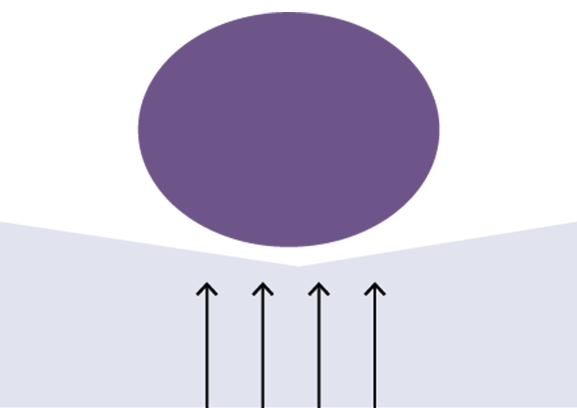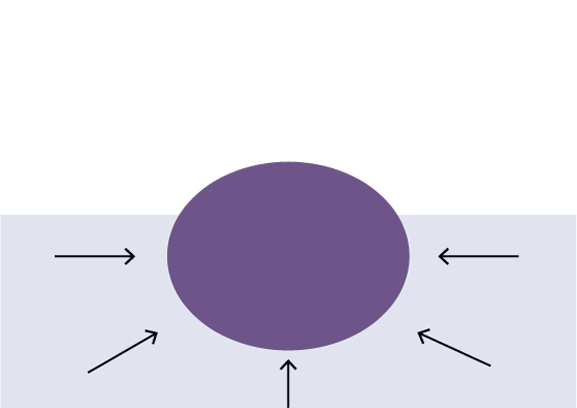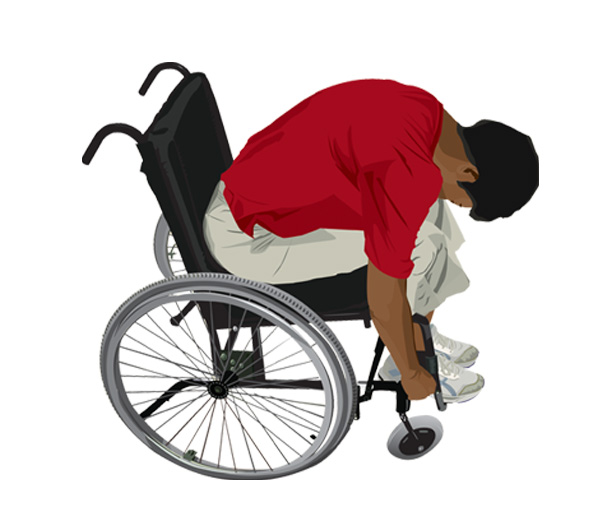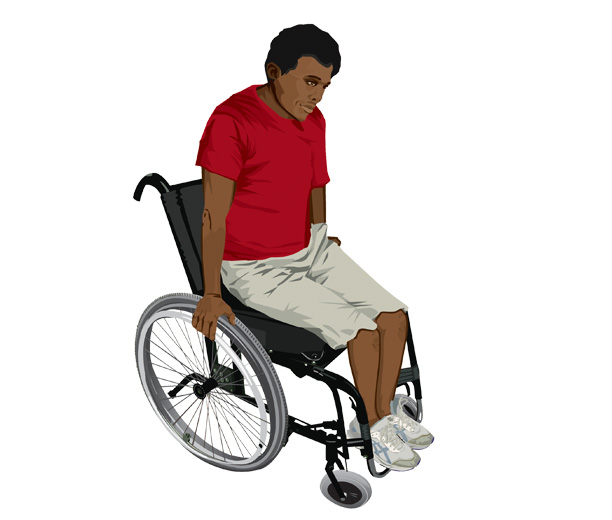Skin considerations for seating
Sitting can cause pressure injuries and harm skin integrity, if not managed correctly. This section outlines some of the risks and techniques to consider when maintaining healthy skin care in a person with a spinal cord injury (SCI).
Maximise surface area contact
Pressure equals force per unit area. When sitting on a flat firm surface, the ischial tuberosities take most of the seated body weight. It is possible to increase the contact surface area and minimise pressure, by distributing weight to the greater trochanters and back of the thighs. This is best done with immersion. As demonstrated in the images below, minimal contact with the surface means higher pressure over a smaller surface area; whereas immersion improves pressure distribution through distributing the weight over a larger surface area.

Minimal contact with the surface means higher pressure over a smaller surface area.
Source: QSCIS

Immersion improves pressure distribution, by distributing weight over a larger surface area.
Source: QSCIS
Common issues affecting pressure distribution in sitting:
Cushion
- Incorrect air cushion setup can result in over or underinflation: both can cause high pressure over the ischial bones.
- Inadequate gel or incorrect well width on the cushion can cause the person to ‘bottom out’ through the gel.
- Incorrect dimensions, such as insufficient depth or width, can impact the thigh and/or greater trochanter, and cause the person to slide forward in the chair.
Footplate height
- Neutral knee positioning is ideal.
Seat rake/squeeze
- Too much seat rake/squeeze can increase ischial pressure.
Maintaining or improving postural alignment
- Teach the person with SCI to check their sitting posture. This can be done using a mirror, photographs, or training others on the person’s optimal sitting posture.
- Perform a postural assessment to optimise seating and pressure distribution.
- Start at the hips, to provide a stable base of support (being mindful of cushion selection, such as air or gel), and then assess above and below the hips.
- Comfort, function and independence are important considerations for increased sitting tolerance.
Key considerations for postural alignment:
- The back support fits the person, not the chair.
- Lateral support should provide correct alignment without impacting functions, such as propulsion, reach or transfers.
- The correct height of the back support without impacting functions, such as propulsion.
- Correct height and positioning of armrests.
Other wheelchair and cushion considerations
- Check the wheelchair and cushion are well maintained.
- Educate the person on how to check and maintain correct cushion pressures. The cushion should be checked daily, to see that it is correctly placed on the wheelchair and in working order.
- Wash cushion covers regularly as per manufacturer instructions, as this will reduce bacterial growth on the cover.
- Metal sections on the wheelchair will heat up in hot environments and can cause burns.
Offloading
Offloading refers to the temporary shifting or relieving of weight from pressure points. Although pressure-relieving equipment can be helpful, it does not eliminate all pressure nor replace the need for regular repositioning.
Effective offloading is essential for preventing pressure injuries. Repositioning should occur at least every 30 minutes, with each change lasting a minimum of 60 seconds, to support and maintain skin integrity.
There are a variety of offloading techniques:

Lean: this can include leaning forward, over the knees, or from side to side.

Lift: a full lift, clearing the seated surface.

Tilt: using the mechanics of the power drive or manual wheelchair, by tilting (not reclining) greater than 45 degrees.